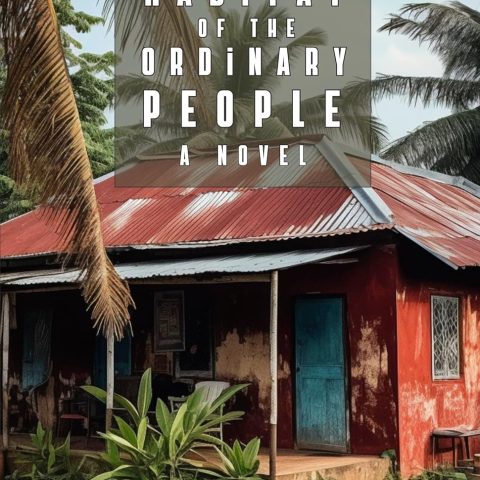Decamping WakandaBy Mark Anthony Neal | @NewBlackMan | with thanks to NewBlackMan (in Exile)Wednesday, May 2, 2018.“This is why we can’t have nice things”, a phrase often heard as a form of admonishment toward those who might look like yourself, but who might be engaging in the kinds practices, that compels one to distance themselves from those very ones who might look like yourself. Such commentary has been directed towards those, in the Criticism-class if you will, who have been so inclined to offer a deconstructive framework towards this moment’s iterations of “nice things”, be it Beyonce’s Coachella performance, Kendrick Lamar’s Pulitzer Prize or for the purposes of this meditation, the one-billion-pound film, Black Panther. A reminder, perhaps, that to have “nice things” is to have the intention of staying “somewhere,” and that “somewhere” has often been fraught with the reality of a culture given to fugitivity, or said another way, a culture (always, already) on-the-run.The specifics of the world that Stan Lee created more than 50 years ago, and the myriad updates to that vision including Ryan Coogler’s finely pitched Hollywood film, notwithstanding, Wakanda is a timeless extension of the Promised Land, as imagined by any number of generations of Black folk who sought blueprints for liberation in the creative and spritual realm. While much has been made of about the rather substantive debate about isolationism versus engagement – cautious T’Challa vs. the so-called “woke” Killmonger – it is the third stream of thought that animated my interest in Wakanda; namely that of the Jabari tribe that chose to hide in plain sight, if you will, as maroons. The joy of the Black Panther series – here broadly defined – was in its previous obscurity, a maroon archive if you will.However Black people and Blackness might function in the world, they have done so with a critical understanding of the value of cultivating a world of Blackness beyond the gaze of Whiteness; it is what often compels so many of the old cultural guard to romanticize and even memorialize Black institutions that seemingly could only serve the logics of legal segregation.The inclusion of a third stream of Wakanda Thought, if you will, maps loosely on to the experience of American Maroons, as described by Sylvianne A. Diouf in her book Slavery’s Exile: The Story of American Maroons (NYU Press). As Diouf writes, American Maroons “stood at the intersection of three worlds. One was their refuge, another the white controlled territories of the field, The Big House outbuildings, and sometimes the Big House itself..” (9). Of the third more liminal site Diouf writes, “the third was the physical and social terrain carved out by the enslaved community, from the quarters to the neighboring plantations and fields” (9) – what we might think of as the playground of Blackness or the public site of Blackness – as Diouf notes, “To be successful maroons needed to build and maintain a symbiotic relation with these three geographical and social modes.” (9).In his book Freedom as Marronage, Neil Roberts offers a nuanced revision to notions of maroon realities, noting that “Maroonage conventionally refers to a group of person isolating themselves from a surrounding society in order to create a fully autonomous community” (4) but adds that such thinking in “contemporary political theory” – and perhaps contemporary mainstream cultural criticism – “lacks a sufficient vocabulary to describe the activity of flight and the dialectical mechanisms operating during the flight process.” (8-9) Roberts writes, “Marronage fills the discursive void. Marronage is a multidimentional, constant act of flight that involves what I ascertain to be four fundamental pillars: distance, movement, property and purpose…Movement is the central principle of Marronage to which the other three are inextricably connected.” (9-10).Where Roberts speaks of an intentionality associated with flight, few have been blessed with the sustainable resources – financial and material, as well as spiritual – for such intentionality to be rendered as anything other than improvisational; the genius of the culture might be read in the intentionality of improvisation or what those Old Africans, not quite Americanized, called “making a way out of no way.’ Such might be the case of one of the more resonant “Promised Land” narratives of the late 20th Century, Derrick Bell’s short story “Afroatlantica Landing,” from his collection of short stories Faces at the Bottom of the Well.In Bell’s story the mythical island of Atlantis emerges from the ocean, and despite the imperialist desires of the United States and others to colonize the land, no one could survive the island – they could not breathe – until one African American was able to. After a party of African Americans successfully landed on the island — “the party felt exhilarated and euphoric…it was an invigorating experience of heightened self-esteem, of liberation, of waking up” (35) – the discourse shifts to Black American emigration, to what was referred to as “Afroatlantica.” Closure perhaps to the ongoing debates about the so-called “Negro Problem.”Yet the possibilities of what was rendered a “Reparations subsidy” – the mass emigration of Black Americans – was a fleeting one. As Black Americans mounted ships with the intention of settling Afroatlantica, the island disappeared as mysteriously as it appeared. Yet as Bell writes, “They felt deep satisfaction – sober now, to be sure – in having gotten this far into their enterprise, in having accomplished it together…the miracle of Afrolantica was replaced by a greater miracle. Black discovered that they themselves actually possessed the qualities of liberation they had hoped to realize on their new homeland.” (45-46). A cautionary tale from the late Bell, who demystified legal theory for lay audiences in a series short story collections, “Afroatlantica Landing,” highlighted the fluidity of the so-called “Promised Land”, if not freedom itself, and the relative power and freedom associated with movement and flight.Unlike the promised land of maroonage, Black Panther, which is to say Wakanada writ large, is a not promised land hidden in plain sight, but simply a Promised Land in plain sight demanding other sets of principles of survival that are not-unlike what many previous generations responded to in light of the historic trading and trafficking in Black cultural production. The production of Blackness in plain site – to be hidden would be an oxymoron within a consumer capitalist structure – has generated legitimate wealth for a small number of African Americans (and quite a few more folk on non-African descent), and inspired charges (both real and imagined) of cultural appropriation, cultural exploitation and the theft of cultural resources that were intended to be more than mass consumables. Black Panther does not present a new set of problems in this regard, at least not any dissimilar than those that The Blues, Motown, Black women’s expressive culture and Hip-Hop have posed for at least century.The material question at hand is simply what comes after Black Panther, and what should be the reasonable expectations given that the material stakes of production and consumption have seemingly changed given the brand’s success? Margo Natalie Crawford offers some insight in her examination of The Black Arts Movement in her book Black Post Blackness, where “Blackness remains that elusive ‘Flash of the spirit’ that moves through the Black Arts Movement to twenty-first century black aesthetics’” (17). The Black Arts Movement represent a then unprecedented flowering of national Black Culture production (to make subtle distinction from the Harlem Renaissance, for example), that manifested itself across multiple media platforms including television, film, the music industry, literature, drama and the visual arts. It was a moment that was unsustainable for any number of reasons, including the lack of viable Black-owned infrastructures of production, and the ambivalence experienced by Black cultural workers with regards to making Blackness accessible to a larger audience.For Crawford the sustainability of the movement can be referenced in those arts collective, like AfriCOBRA and BLKARTSOUTH, that were committed to a politics of abstraction and an aesthetics of anticipation. As Crawford writes, “The Black radical imagination is profoundly anticipatory. Anticipation opens up a new way of thinking about the relationship between earlier and later cultural moments” as “the temporary dissonance between what has already settled into recognizable movement and what is emerging creates the ongoing flow of Black aesthetics.” (40). Crawford argues that these productive tensions find resonance in notions the “not yet finished” — “the unsettled nature of the [Black Arts Movement] as it moved through the different regions of the United States and transnational sites of pan-Africanism” (111) – and an aesthetics of “just left behind,” where Black Panther might be viewed as rear-view iteration of Blackness that informs but does not define Black cultural production. The sustainability of Black culture is deeply connected in the portability of Black culture, and perhaps our aesthetic freedom is tied to our willingness to decamp Wakanda.+++Mark Anthony Neal is Professor of African & African American Studies and Professor of English at Duke University. He is the author of several books including New Black Man and Looking for Leroy: Illegible Black Masculinities. The host of the video podcast Left of Black, you can follow Neal on Twitter at @NewBlackMan
Decamping Wakanda
No Comments currently posted | Add Comment
Comment on this Article
Your Name
Please provide your name
Your Comment
//set data for hoidden fields
//transfer();
var viewMode = 1 ;
//============================================================================
//HTML Editor Scripts follow
//============================================================================
function exCom(target,CommandID,status,value)
{
document.getElementById(target).focus();
document.execCommand(CommandID,status,value);
}
function transfer()
{
var HTMLcnt = document.getElementById(“ctl00_MainContent_txtComment_msgDiv1”).innerHTML;
var cnt = document.getElementById(“ctl00_MainContent_txtComment_msgDiv1”).innerText;
var HTMLtarget = document.getElementById(“ctl00_MainContent_txtComment_HTMLtxtMsg”)
var target = document.getElementById(“ctl00_MainContent_txtComment_txtMsg”)
HTMLtarget.value = HTMLcnt;
target.value = cnt;
}
function hidePDIECLayers(f,p)
{
//e.style.display = ‘none’
f.style.display = ‘none’
p.style.display = ‘none’
}
function toggle(e)
{
if (e.style.display == “none”)
{
e.style.display = “”;
}
else
{
e.style.display = “none”;
}
}
function ToggleView()
{
var msgDiv = document.getElementById(“ctl00_MainContent_txtComment_msgDiv1″);
if(viewMode == 1)
{
iHTML = msgDiv.innerHTML;
msgDiv.innerText = iHTML;
//alert(viewMode);
// Hide all controls
Buttons.style.display = ‘none’;
//selFont.style.display = ‘none’;
//selSize.style.display = ‘none’;
msgDiv.focus();
viewMode = 2; // Code
}
else
{
iText = msgDiv.innerText;
msgDiv.innerHTML = iText;
// Show all controls
Buttons.style.display = ‘inline’;
//selFont.style.display = ‘inline’;
//selSize.style.display = ‘inline’;
msgDiv.focus();
viewMode = 1; // WYSIWYG
}
}
function selOn(ctrl)
{
ctrl.style.borderColor = ‘#000000’;
ctrl.style.backgroundColor = ‘#ffffcc’;
ctrl.style.cursor = ‘hand’;
}
function selOff(ctrl)
{
ctrl.style.borderColor = ‘#9BC1DF’;
ctrl.style.backgroundColor = ”;
}
function selDown(ctrl)
{
ctrl.style.backgroundColor = ‘#8492B5’;
}
function selUp(ctrl)
{
ctrl.style.backgroundColor = ‘#B5BED6’;
}
�
Size 1
Size 2
Size 3
Size 4
Size 5
Size 6
Size 7
//give focus to the msgdiv… always otherwise save button will not save content.
var mDiv = document.getElementById(“ctl00_MainContent_txtComment_msgDiv1”);
try
{ mDiv.focus();}
catch(e)
{
//alert(‘Invisible’)
}
//if ( <> ‘none’)
//
Send to a friend | �
View/Hide Comments (0) | �





